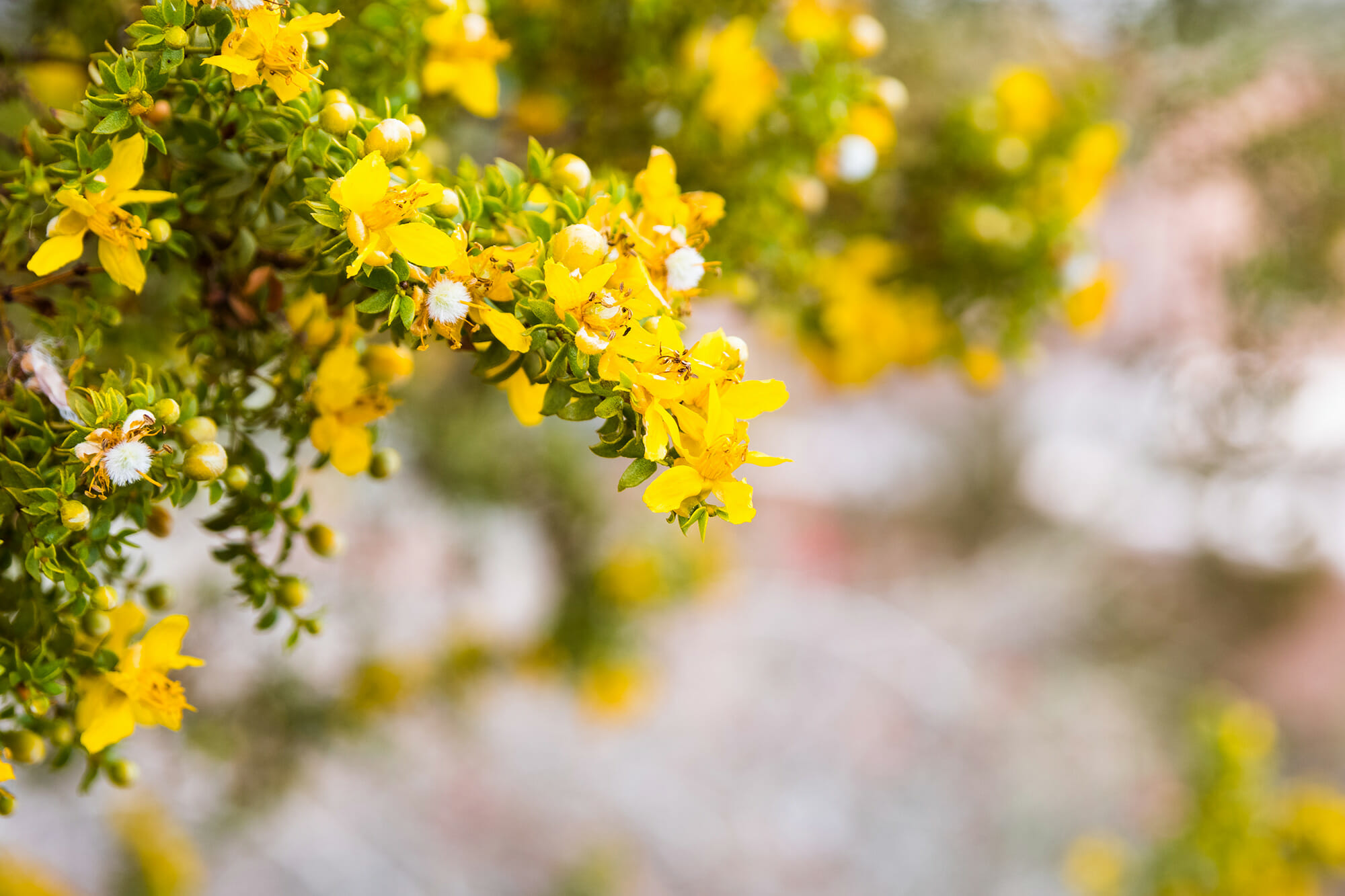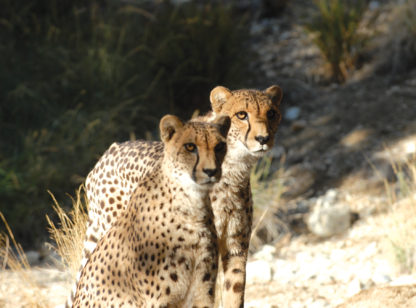As you drive around the outskirts of the Coachella Valley and view the desert landscape, you will see one of the most resilient, oldest medicinal plants on earth. Native to Southwestern United States and northern Mexico, Larrea tridentata, commonly known as creosote bush and greasewood, covers this arid ground in almost a perfectly spaced pattern. It provides shelter for the desert tortoise, kangaroo rats, birds, and is a food source for jackrabbits, amphibians and reptiles. This woody shrub can be several meters high and similar in diameter. It has small leaves, and in the spring, produces small yellow flowers and subsequently seeds in early summer. The seeds are covered in trichomes that make them look like little snowballs. After a rain, their strong scent is quite unique. Rubbing a few leaves between your fingers will give you a fresh burst of their scent, which I liken to a rubber smell.
It also is host to the Tachardiella larreae, an insect that makes and deposits lac, which can be compared to wax sealant, on its stems. When heated, it is pliable and hardens when cooled. Native populations have used lac to seal and line food containers.1
The root system of the creosote bush is dynamic, sprouting both vertical roots downward and radial roots horizontally, contributing to its ability to last up to two years without rain. The reproduction of the plant is not completely understood. It produces both seeds and clones and grows at an extremely slow rate. One individual creosote bush can produce large, ring-shaped clones, which can become several thousand years old.7 One clone located in the Mohave desert is estimated to be 12,000 years old and rightly named the King Clone, putting it among the oldest living organisms on Earth.3
The creosote bush has been a valuable medicinal plant for native desert populations. There are varying methods of preparations, and uses are broad spectrum. Highlights of its historical medicinal application include urinary tract infections, respiratory tract infection including bronchitis and the common cold, arthritis, rheumatism and muscle pain, diabetes, digestive disorders and viruses, including venereal diseases, and chicken pox.2,4,5,6
With the rise of antibiotic resistant organisms, science has refocused back to researching plant medicine for more insight (most of our modern pharmaceuticals were/are synthetically designed after what was thought to be the active component of a medicinal plant). Advanced research of the creosote bush supports antibiotic activity against Methicillin-resistant Staphylococcus aureaus (MRSA) and at a lower concentration than tetracycline.2 Other compounds of the plant have been researched for antiviral (including HIV and herpes), antimicrobial, antioxidant and antitumorigenic properties.2,4,5
Plants can pack a lot of power and should always be respected. As with most substances, improper use can be toxic. My hope is that the next time you see this ancient plant across our landscape, you will see it in new light of wonderment and respect for all it provides and all we have yet to learn.
Dr. Shari Jainuddin is a naturopathic primary care doctor at One Life Naturopathic and also offers biofeedback training and craniosacral therapy. This article is intended to be informative and raise appreciation of the medicine that surrounds us and is not provided as medical advice. For more information, call (442) 256.5963 or visit www.onelifenaturopathic.org.
References available upon request.




















































Comments (0)